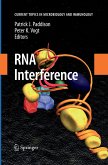When I received an invitation from Ron Landes (Landes Bioscience) to edit a book on CtBP family proteins, I was gratified to realize that the importance of these proteins has reached the level of deserving a 'separate' book. As the reader can see, there has been significant advancement in our understanding of the fijnctions of these proteins in the past ten years since CtBPl was cloned in our laboratory. Genetic and biochemical studies with Drosophila provided the critical evidence to show that dCtBP is a transcriptional CO repressor. Genetic studies with mutant mice have established that these proteins are essential for animal development. The CtBP family proteins are unique in several aspects. They were the first among proteins containing a metabolic enzyme fold to be implicated in transcriptional regulation. The vertebrate CtBPs exhibit distinct nuclear and cytosolic activities. The crystal struaures of CtBPl and molecular modeling studies have illuminated the mo lecular basisof its dual activity and the interaction with target peptides. The organization of the vertebrate CtBP2 gene has provided a novel example of genomic consolidation indicating how a single gene could code for two di verse proteins. I believe that this book will be a valuable reference source for new researchers to understand more about the CtBP family proteins and their role in growth, development and oncogenesis.
Bitte wählen Sie Ihr Anliegen aus.
Rechnungen
Retourenschein anfordern
Bestellstatus
Storno








